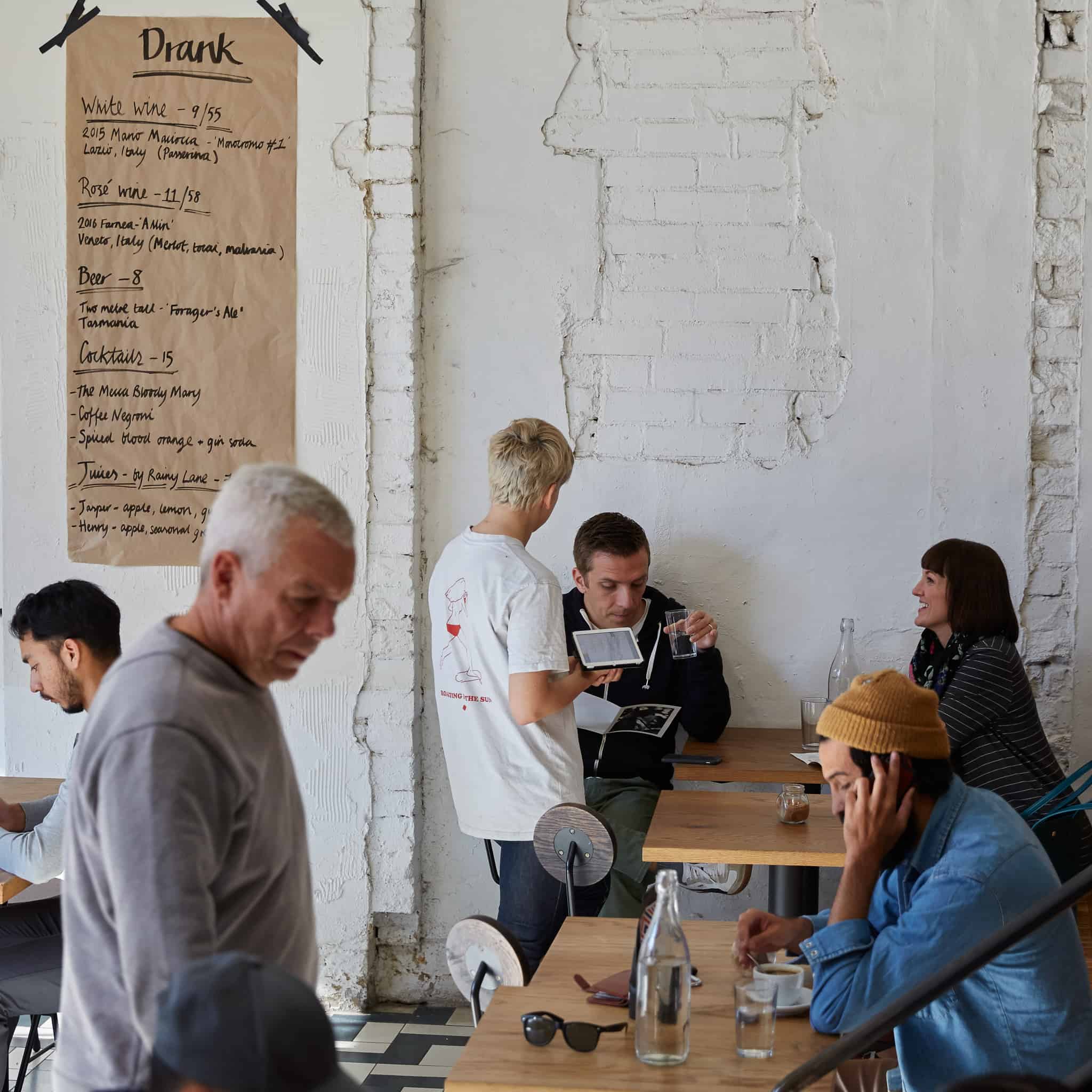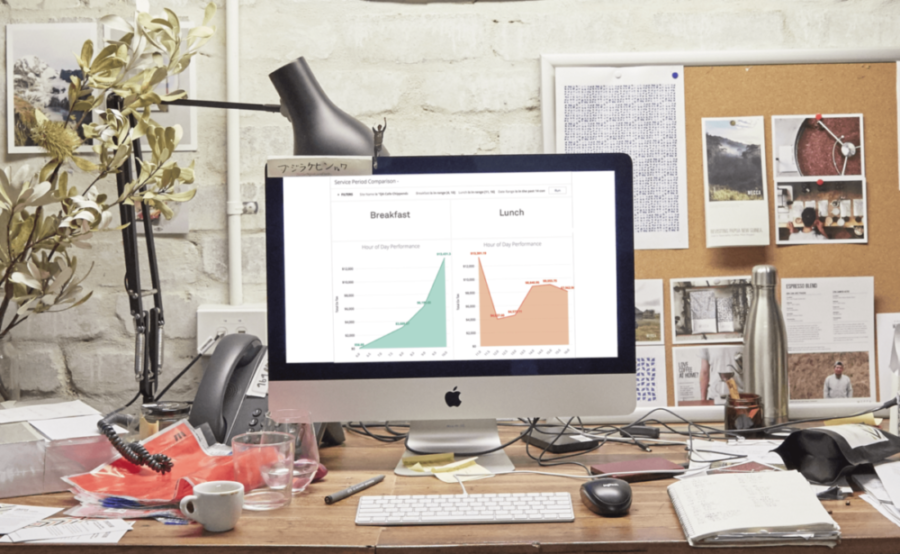
To open a new cafe or amp up your existing one, you need to start with a business plan.
When you’re doing this for the love of coffee and food, sitting down for hours to create a business doc sounds… dry. But, take our word for it – a business plan is office work you won’t regret doing.
Whether your goal is profit growth, a new outlet, or a new revenue stream, creating a plan points you in the right direction and gets you super focused on the steps you’ll need to get there. It’s also a must-have if you’re thinking about raising cash to grow.
In this guide, we’ll cover:
- With a cafe business plan you’ll find it easier to:
- Things to keep top of mind when writing your cafe business plan
- Cafe business plan template
- Write a plan, make a coffee, conquer all
With a cafe business plan you’ll find it easier to:
1. Secure finance
If you need finance for your cafe, you need to prove to lenders that you’re a great investment. A cafe business plan helps you do that in three ways:
- Clearly explains your business idea
- Reassures lenders that you’ve thought through the plan and that you’re serious about it
- Gives realistic figures around predicted income and profit, so lenders can see the risk they’re taking
2. Sort your priorities
Setting up a business can feel chaotic. A business plan makes things a bit simpler by giving you direction, defining objectives, and creating the strategies to help you reach your goals.
It also helps you think about challenges you might face, so you can plan for a way to manage them.
By regularly reviewing your plan, you’ll find it easier to stay on track. It’s a good reminder of your goals and will show if your strategies are working, and if there are any new challenges or opportunities you need to deal with.
3. Get control over your business
The day-to-day running of your business can, at times, feel like you’re running around with your hair on fire. You get so caught up working IN the business, you don’t spend time working ON the business. Developing and reviewing your business plan makes you step back from the operations to see what’s working, and what’s not.

You’ll get the chance to think about:
- The current market, what’s happening in your industry, and who your competitors are
- Where you are in the market and where you want to be
- Your point of difference
- The challenges you might come across and how to avoid them
- Your current financial position, cash-flow and projections
- Your goals, how you’ll achieve them, and by when
- How you’re measuring performance
- Better managing your resources
Things to keep top of mind when writing your cafe business plan
Do your research
Gather up all the information you’ll need before you start writing. This can be everything from financials and business structure to marketing strategy. Not only will this speed up the process, but will help to ensure more accurate forecasting and analysis.
Write your summary last
Once you’ve gotten everything out of your brain and onto paper, you’ll have a much clearer idea of where your business is headed. This will make writing your summary heaps easier. The summary is the first thing your bank, investor or future partner will read – it should motivate them to read the rest.
Ask: “who is this plan for?”
Depending on who you’re developing the plan for, it should be written differently. For example, there’ll be more emphasis on finance if you’re applying for funding. To get a business partner sold in, you might need to spend more time outlining things you know he or she will be excited about, or ways you’re planning to overcome any objections or worries.
Note if you’re using actual or projected figures
You need to be clear if you’re showing projected figures or actuals. For projections, you’ll need to justify how you arrived at those figures. You’ve said you’ll have a $500k turnover in the first year – why is that a likely outcome?

Proofread your plan
Your cafe business plan should make you look professional, so errors are a no-no. Use the ‘Read Aloud’ function in Word, run it through spellcheck, then get someone else to double proof it.
Maintain your business plan
This plan is a living document. You should review it on a set schedule or as things change: a new office block or a competitor opening nearby, for example. Set a reminder to review your plan every 6-12 months.
Include others in your planning
Your team probably has great ideas or insights about your business. Brainstorm with them to fully take advantage of all that information. This has the added bonus of bringing them on the journey, so you get their buy-in.
Also, consider including professionals in your planning. Your accountant or business advisor may have insights that might not have occurred to you.
Be precise
There is no typical business plan length, but it should always be as brief as possible. For a cafe or restaurant aim for under 30 pages, especially if you’re writing it for finance.
Include images
Site designs, photos, cafe plans and graphs all help to make the plan easier to understand and much more engaging for the reader.
Cafe business plan template
This simple cafe business plan flow will help you plan what goes where. We also have a free template you can use to create your cafe business plan.
- The front page: This should include your legal and trading names, location, website and logo. If the plan is being written specifically for someone, include their name and company here too.
- The summary: This should be the last thing you write. It’s a concise summary of the other sections of the plan – two pages long at most. It should pique the reader’s interest and make sure they keep reading.
- Overview of your industry and business: This will be general information about your local cafe and restaurant market. It might also include an overview of the wider coffee industry and anything else that’s important or interesting. Back up your information with data from relevant and trusted sources. You should also give an overview of your business and what makes it unique in this environment.
- What the market is doing: This is where you expand on your market analysis. Talk about your target customer, who they are, their preferences, and the size of this market. Also discuss why there is enough demand for your business – are you in a niche, filling a gap or an early adopter of something new? This section should also have info about your competitors and how your cafe will compete.
- How you’ll market yourself: This section outlines your marketing strategy, spelling out how you’ll get bums on seats. Detail everything – promotions, advertising, pricing and any special offerings, sales, service, fit-out and opening hours. This is where you can put lots of juicy images too – people will want to see your designs, fit out concepts and ads, for example.
- Your ownership and management: Describe who owns what, who manages the business and why they’re the right person for the job. Outline your professional support network, too – people like accountants, mentors and supplier contacts.
- Operations: This is about how you’ll achieve your grand plans. Here’s what to include:
- Your facilities – its address, size, lease details, fit-out information, if the landlord is helping with the build, and who pays for outgoings like pest control
- Staffing – who you need, and how you’ll hire and retain them
- Equipment – what you need and how much it’ll cost to buy and maintain. You can also talk about nice-to-haves and what you want to buy in the future
- Supplies – what goods you need to operate and where you’ll get them from
- Financial planning: There is no point going into business if you’re not going to make money – this is where you prove that you will. It’s worth hiring an accountant to help create this.

The essentials checklist :
- Projected income statement. This should show your planned revenue, expenses and profit. It should be month-by-month for at least the first year. This is where you show your potential lender how you’ll be able to pay them back.
- Cashflow projections showing predicted incomings and outgoings.
- A balance sheet that shows a snapshot of your assets, liabilities and equity – that is, what you owe and the things you own.
- Breakeven analysis to show potential investors or lenders how much you need in sales to turn a profit.
- Any extras (appendix): Include any extra information that will support the business plan. These could be things like:
- Credit histories of people involved in the business
- Market research of competitors
- Resumes of owners and staff
- Relevant industry information
- Site plans
- Any existing debt or mortgage documents
- A copy of the lease
- Information about your product and service
- Marketing materials
- References from colleagues
- A link to your website
Write a plan, make a coffee, conquer all
A business plan is key for any proposal you want to make, whether it’s to a future partner, property owner or lenders when you need a cash injection. Now you have the headings and what goes under each, it’s time to get cracking.
Pick the brains of your team members, and touch base with your accountant and advisor to gather up all the info and insights. Then, put a lock on the door, pull yourself a triple shot and get writing. Once you’ve written everything up (including all the extras), that’s when you write your summary – while it’s fresh in your mind. Remember to think about who you’re writing this for, to get it proofed, and then to set a reminder to review it regularly.
Creating your cafe business plan will take time away from your day-to-day business operations, but it’s worth it. Instead of spending every minute stressing about beans and take away lids, you’ll have a moment to step back, think about what you’re doing, and how to do it better.
This keeps your eye on the future and keeps you accountable in reaching your deadlines and financial goals. So, think about all that time in the office as an investment in your dreams. The better the plan, the better the business and the more chance you’ll have of spending your days doing what you love: sniffing fresh coffee and making people smile.

News you care about. Tips you can use.
Everything your business needs to grow, delivered straight to your inbox.



